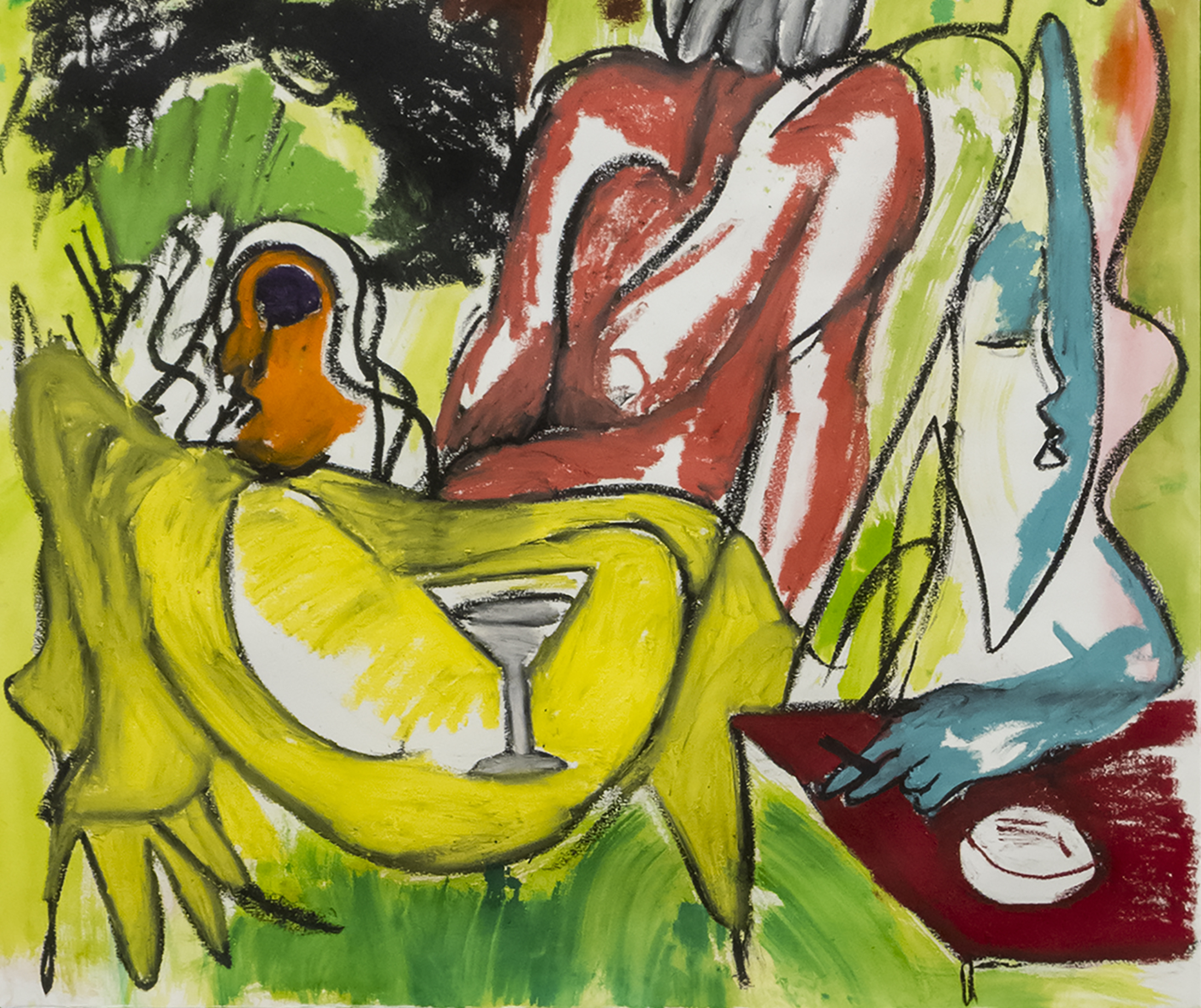
Review
Ríe ahora, llora después (“Laugh Now, Cry Later”), by Pia Camil | Autobiography of Reflection
by Fabiola Eunice Camacho
At OMR Gallery
Reading time
4 min
The work of Pia Camil (Mexico City, 1980) leads us through a network of relations between identity, the female body, art history, and consumer objects. Throughout her career, the artist has managed to take a critical look at such social phenomena as migration, gender roles, and the precariousness of urban life.
Her installations, performances, sculptures, and textile interventions exhibit the value of manual work and the primacy of technique: Camil is an artist who develops her production within a workshop logic, waging on artistic work that is side-by-side with semi-industrial work, as in curtains and drapes produced from the assembly of fabrics originating in specific contexts.
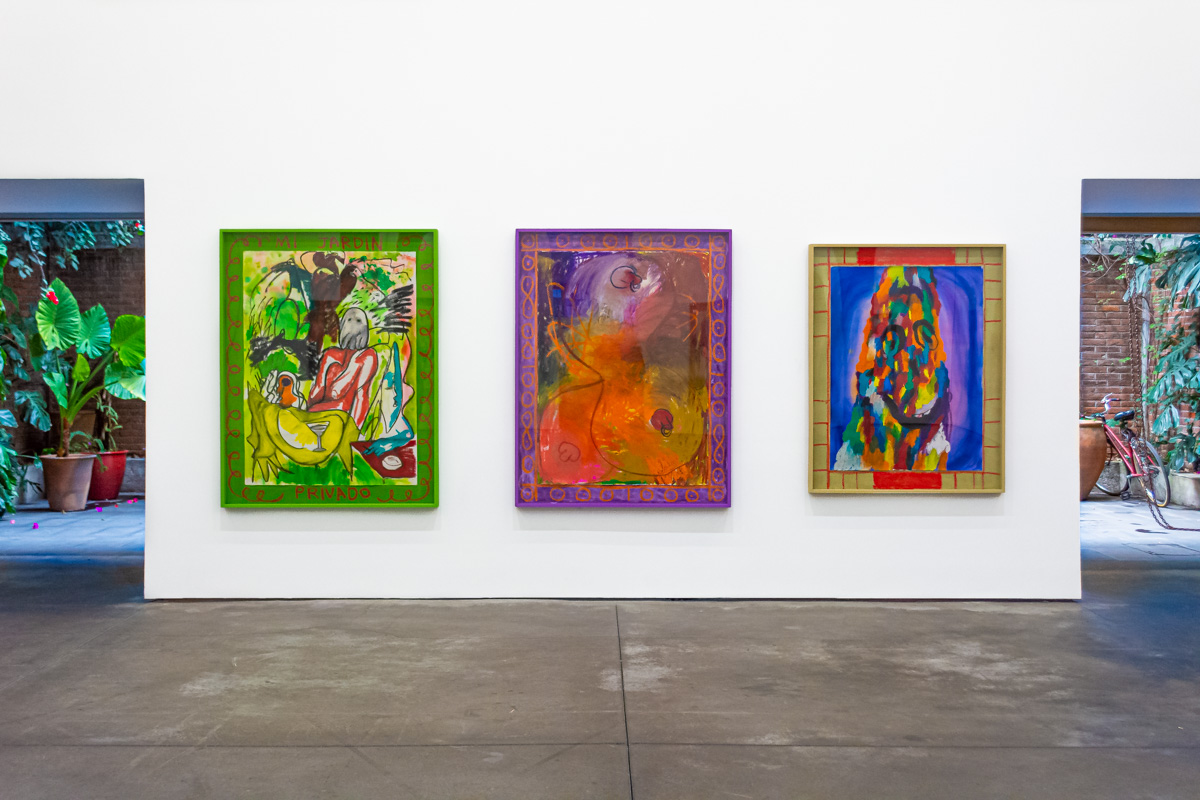
Currently, the artist confronts us with the overflow of her interior space in Ríe ahora, llora después (“Laugh Now, Cry Later”), in Galería OMR. The project is divided into twenty medium-format drawings. The pieces were created using mixed media, watercolor, oil pastel, and charcoal. The palette includes both cold and warm tones, although it also highlights the constant use of dark pigments. The composition turns out to be extremely careful. Even though some pieces were created with the help of young children, the technical and material aspects operate as features of an organic work.
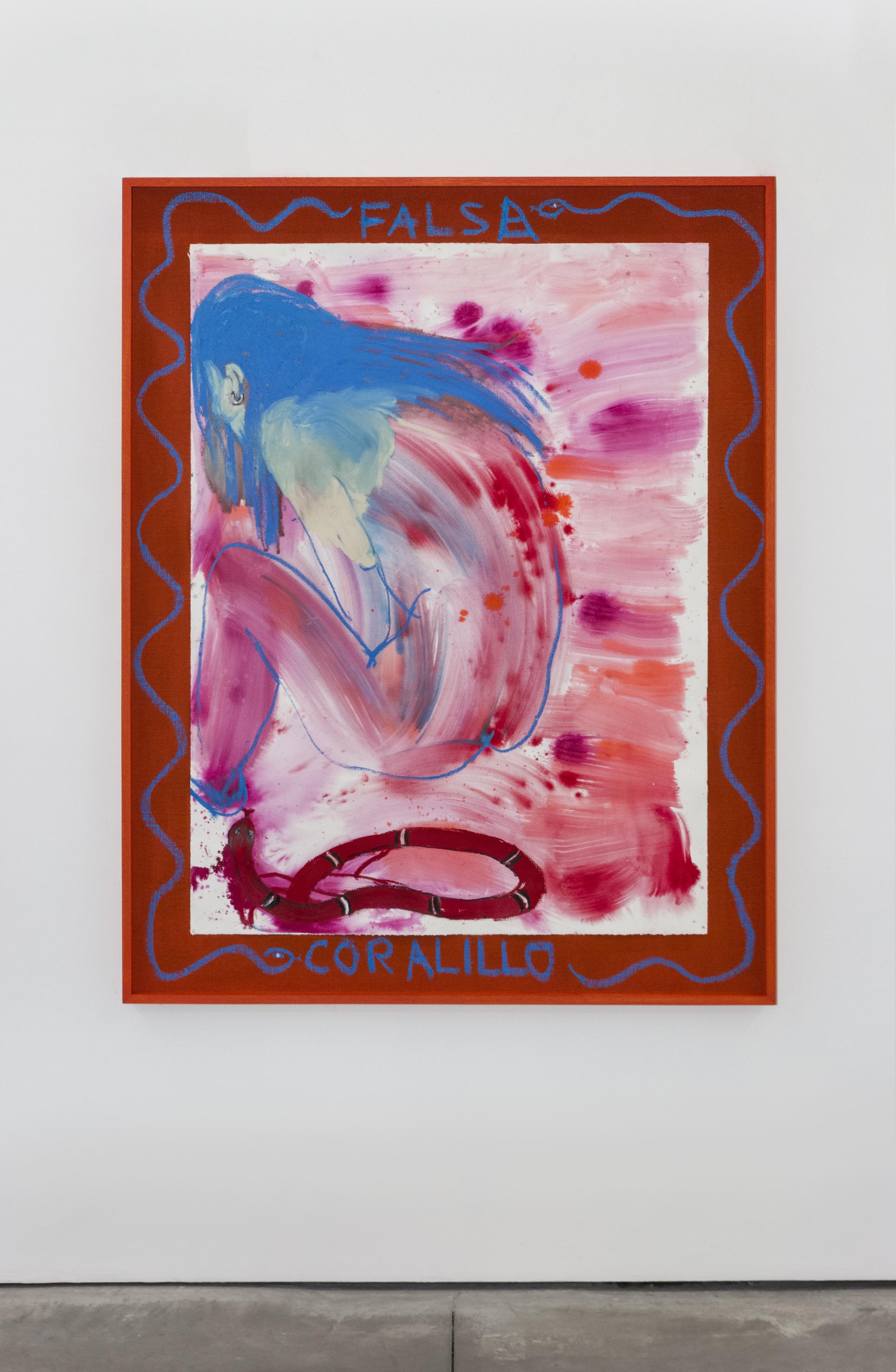
On this occasion Camil approaches her intimacy from the perspective of motherhood, rolling out an autobiographical exhibition. The pieces elaborate on the body and display the importance in the work of her support network, as both mother and artist. The political statement is evident, as it situates motherhood in a place beyond private work. The deployment of images calls us to suspend ourselves between the color and the presence of bodies: scenes and faces that effortlessly capture our gaze.
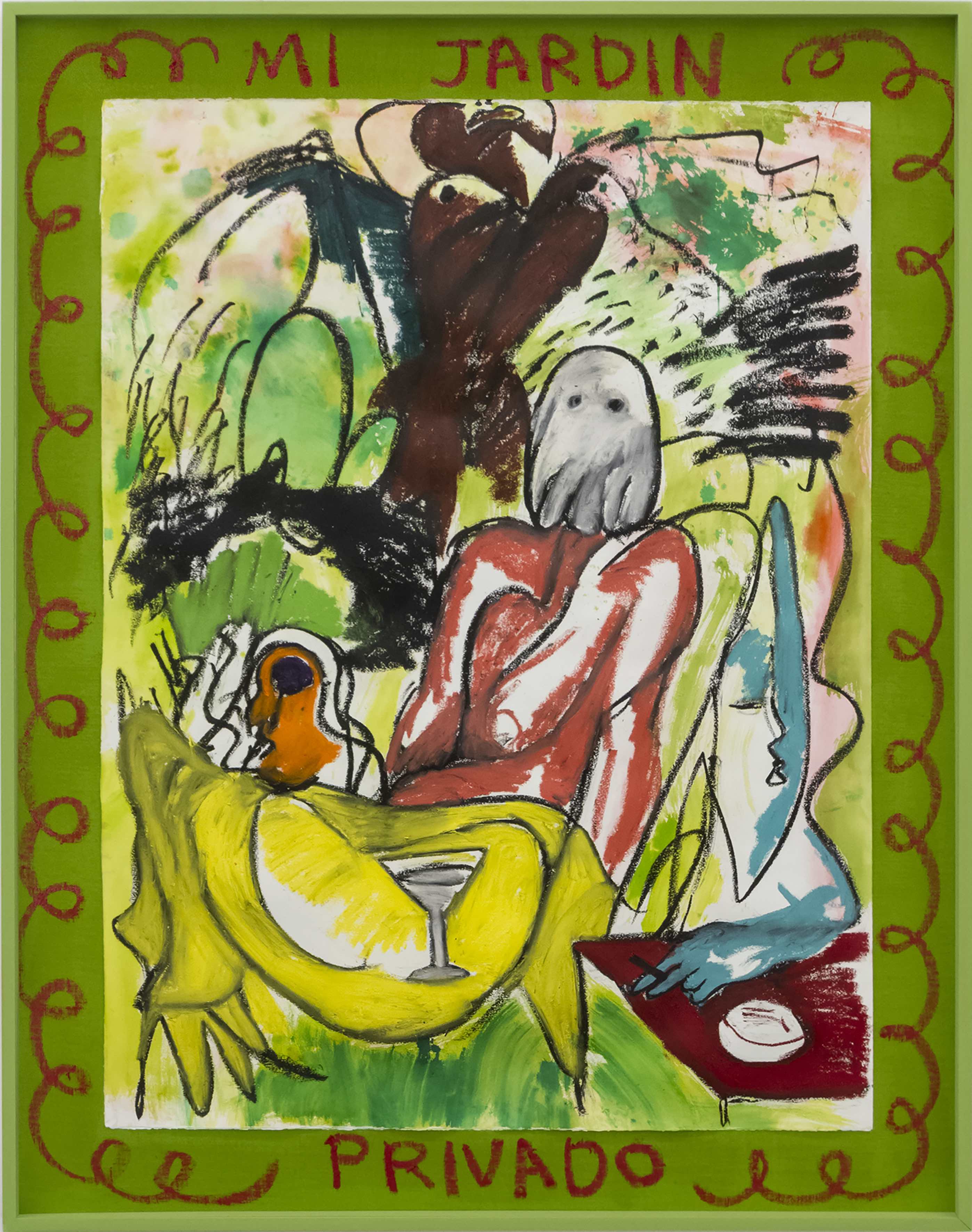
Such themes as the body, desire, and death are present in different ways, even in a dreamlike mode. The artist challenges us to observe her entire body, thus producing the idea of a nourishing mother. The details of the images make us want to see them again and again. The pieces are little-by-little transformed into mirrors that return to us our own reflection. This operation invites us to leave ourselves and to hold onto our truths, however hard and frightening they might be.
This experience achieves absoluteness in Mi jardín privado (“My Private Garden”). In this piece one observes a paradisiacal place in whose center is a woman of color in full ecstasy. Below, another woman with a mask is half-naked with a martini; next to her are two more characters, one on each side. The most visible one smokes with abandon. In this case, the dialectic of art history is transformed thanks to the appropriation of bodies. Both in the composition and in the palette, the artist posits a tension in the representation of the female body in relation to the work of Paul Gauguin (Paris, 1848-Marquesas Islands, 1903), and specifically in the works produced on his voyage to Tahiti. Mi jardín privado manages not only to comment on the representation of bodies, but also to reveal the desires produced by the heteropatriarchal history of art.
The show offers other formulations regarding the body, as in Ríe ahora, llora después (“Laugh Now, Cry Later”), which presents the face of a clown whose satisfied smile is ominous despite the use of pink and blue colors. On the other hand, in Sadness brimmed, the female body is shown as a support for eroticism and death.
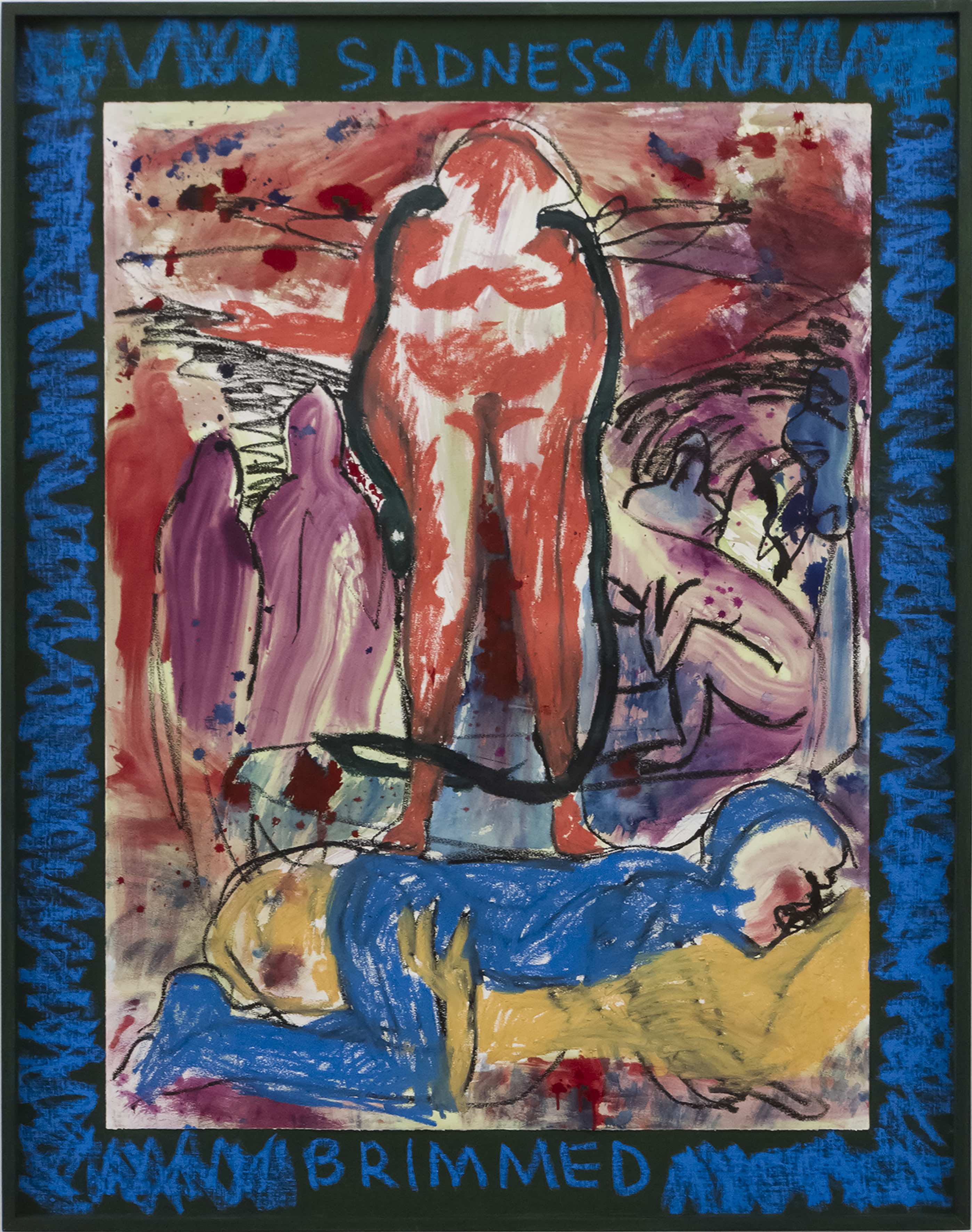
In the contemporary scene it is strange that we are faced with pieces whose symbolic charge allows us to move directly to our biography, in resonance with political and social emphasis. The work of Pia Camil succeeds in this: it leads us from the intimate to the communal…birth, mourning, abjection, light, and absolute calm.
Published on February 19 2020